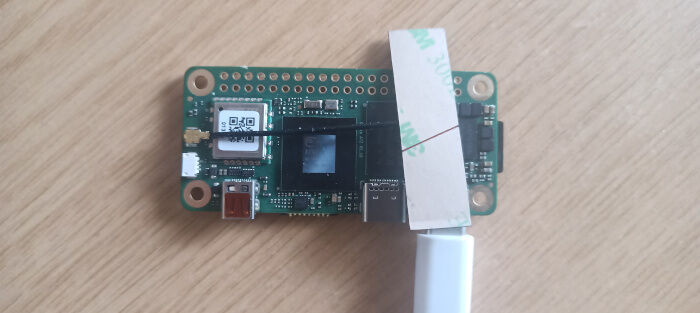This is a short series looking at the Radxa Cubie A7Z single board computer. It’s billed as “tiny size, mighty AI” SBC.
The SBC is powered by the Allwinner A733 SoC, featuring a hybrid octa-core CPU (dual-core Arm Cortex-A76 and hexa-core Arm Cortex-A55 up to 2.0GHz), integrated 3 TOPS NPU, and Imagination BXM-4-64 GPU, providing AI and multimedia processing capabilities. The board is designed for edge AI applications such as image recognition, computer vision, voice processing, robotics, and smart IoT devices.. This is a tiny board measuring a mere 65mm x 30 mm x 6mm.
For this article in the series, I’m looking at the power consumption of the Radxa Cubie A7Z.
I’ll see how the Radxa Cubie A7Z (“Cubie A7Z“) compares to a variety of different small computers. They are the Radxa Cubie A7A (“Cubie A7A”), the Radxa ROCK 4D (“ROCK 4D”), Radxa Rock 5T (“ROCK 5T”), the Firefly AIBOX-3588S (“AIBOX-3588S”), the Orange Pi 5 Max (“Max”), the Orange Pi RV2 (“RV2”), the Orange Pi R2S (“R2S”), Banana Pi BPI-F3 (“BPI-F3”), and the Raspberry Pi 5 (“RPI5”). I’ve not included mini PCs in this chart simply to reduce the number although their results are included in the electricity costs page.
Let’s start with power consumption at idle. The results are captured in the chart below.

The Cubie A7Z’s power consumption of 2.9W at idle falls roughly in the middle for the SBCs. Bear in mind its one of the least powerful of the computers. At a later stage, I’ll want to see the power consumption when only its RISC-V coprocessor is awake.
When the A7Z is headless and idle, power consumption falls to 2.2W.
The chart needs explanations to put the results into context.
- The chart measures the power consumption of each system (not only the CPU). It doesn’t include the power drawn by a monitor.
- All the machines have onboard graphics only with the exception of the Orange Pi R2S which has no video output.
- The Radxa Cubie A7Z, Radxa Cubie A7A, Radxa ROCK 4D, Radxa ROCK 5T, Firefly AIBOX3588S, Orange Pi 5 Max, the Orange Pi RV2, Orange Pi R2S and Raspberry Pi 5 are using their default settings with no underclocking. At idle the Firefly AIBOX-3588S runs at 400 MHz, both the Radxa Rock 5T and Orange Pi 5 Max runs at 408 MHz, the Radxa Cubie A7A and A7Z runs at 416 MHz, and the Pi 5 runs at 1500 MHz. The Orange Pi RV2, R2S and Banana Pi BPI-F3 run at 1600 MHz.
- WiFi and Bluetooth are enabled on all machines with the exception of the Orange Pi R2S and the Firefly AIBOX-3588S which don’t have either.
- The Radxa Cubie A7Z and Radxa Cubie A7A, Radxa ROCK 4D and Radxa ROCK 5T are running Radxa OS (a customized Debian 11/12 with KDE Plasma), AIBOX-3588S is running Debian 12 (Bookworm), the Orange Pi 5 Max is running Ubuntu 22.04 (Jammy Jellyfish), while the RV2 is running Ubuntu 24.04.2 (Noble Numbat). The Orange Pi R2S is running Ubuntu Server 24.04. The Pi 5 is running the Raspberry Pi OS (which is based on Debian 12). The Banana Pi BPI-F3 is running Bianbu OS 24.04.
Next page: Page 2 – Power Consumption With CPU Stressed
Pages in this article:
Page 1 – Power Consumption With System Idle
Page 2 – Power Consumption With CPU Stressed
Page 3 – Electricity Costs / Specifications
Complete list of articles in this series:
| Radxa Cubie A7Z | |
|---|---|
| Introduction | Introduction to the series and interrogation of the Cubie A7Z |
| Power | I compare the Cubie A7Z's power consumption to other machines |
| Radxa OS | A Debian-based Linux distribution with KDE Plasma |
